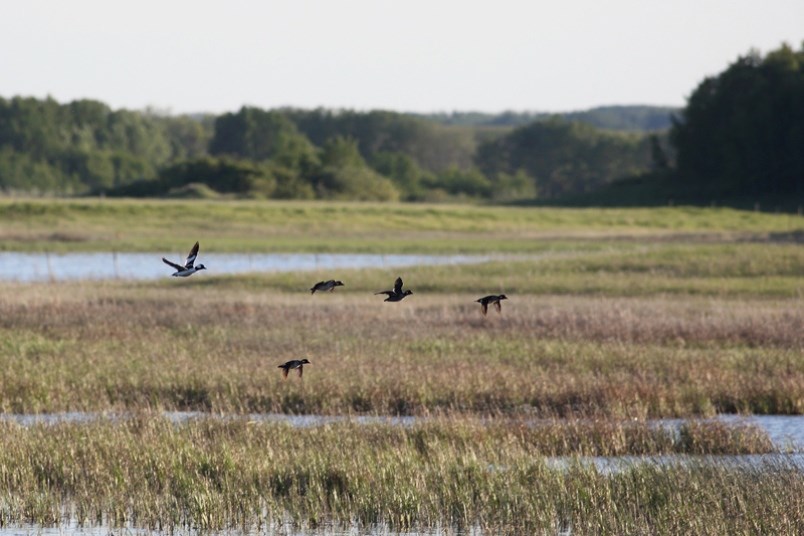YORKTON - In the past I have written about the importance of wetlands although I also acknowledge that farmers probably should not be expected to carry the cost of preserving such areas.
While it might not seem like it -- wetlands, and it’s the same for areas of bush, have a cost to maintain – they are after all natural areas and Mother Nature does her thing and the areas survive nicely.
But the farmers hold deed to such areas, and with some work, they could be growing wheat or canola.
Even if the land is not ideal for crop production when canola is floating near the $20 a bushel mark farmers see a reason to drain sloughs and cut down bush.
There is also the matter of pure convenience. As machinery has gotten ever larger, manoeuvring around natural areas can be an issue, especially when staff with more limited hours in the tractor seat are at the helm. A quarter section clear corner-to-corner is just easier to manage.
And one might even suggest that when a slough goes, so to do the ducks and geese stopping in and eating crop.
So for a farmer there is a pull to eliminate natural areas.
But, there are notable reasons to keep them too, as the Provincial Association of Resort Communities of Saskatchewan has pointed out in a series of recent Facebook posts.
For example, the first post noted wetlands are home to a wonderful and interesting diversity of species.
“In the spring, wetlands are brimming with waterfowl, blackbirds and shorebirds as they nest and raise their young in the safety of reeds, grasses and stones. Not only is it a sanctuary for migratory and year-round birds, there are also fish species, frogs, turtles, muskrats, minks and beavers that are long-term residents. With deer mice and ground squirrels living in the grasses adjacent to wetlands and fish swimming in open water, this ecosystem is a favourite of osprey, eagles and hawks. But, let’s not forget about the itty bitty creatures that wiggle in wetland waters. Aquatic invertebrates, such as dragonfly nymphs and snails form the base of the wetland food chain and are equally as fascinating as other wetland life.”
That is interesting, and one can appreciate wild species are valued by many and worth helping to thrive.
But, should that responsibility be on the individual farmer?
It would seem there is a role for the public to play here.
It might be in tax breaks at the municipal level, or annual ‘natural habitat preservation grants’ from senior government or even organizations such as Ducks Unlimited. The source of funding is less important than the fact such support would help farmers maintain natural habitat and still generating some income from their land.
And, it’s not like the public wouldn’t benefit from the investment either.
As the posts pointed out “wetlands are the kidneys of the planet!” as they “have the ability to remove pollutants from water, thanks to their luscious vegetation. Cattails, for example, aren’t just good for entertainment with seedy fluff that explodes in the wind. These iconic wetland plants are able to capture excess phosphorus and nitrogen, thereby preventing harmful algal blooms.”
In addition, wetlands are masters at carbon sequestration.
“This process sucks in carbon and stores it in wetland soil. Unlike when a sibling hogs all the crayons, we are happy that wetlands hog carbons because it helps to regulate the climate. But, not all wetlands are equally skilled at holding onto carbon. Peatlands, including fens and bogs, collect ‘peat’ or partially decomposed plants and other organic matter (aka a whack ton of carbon). When peatlands are drained for agriculture, forestry or peat harvesting, carbon and nitrogen are released as greenhouse gases in the form of carbon dioxide and nitrous oxide. Approximately 25 per cent of the world’s peatland are in Canada alone, with the Hudson Bay Lowlands as one of the worlds largest peatland systems.”
So wetlands are important, which means collectively we need to assure they are maintained.






